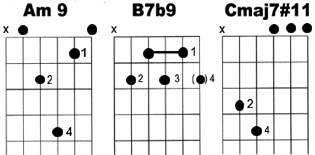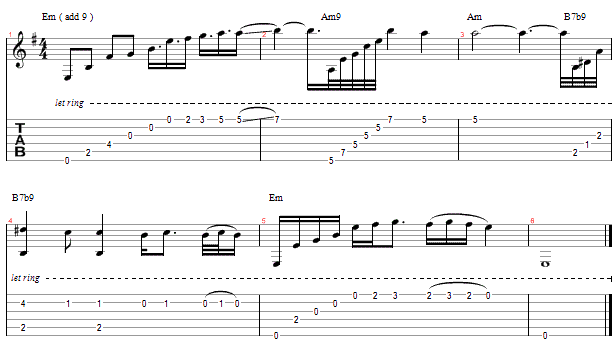Lead Improvisation Spanish Style 10
Playing In Other Keys
I have concentrated on the key of A minor in this tutorial, up till now, as
it is a good starting point to learn the style. However ultimately you should
be able to play in any key.
I suggest that to start on this you should try and transpose all the information
about chords and scales into the key of E minor ( probably the second most common
key )
I am assuming that having got this far into the tutorial you will be able to
do this for yourself - here are a few tips:-
The "3 chord trick" for this key is - Em - Am - B
If you analyze all the notes within these three chords you will find the scale
of E Harmonic Minor
The relative major to E minor is G major - G major has the same notes as E Natural
Minor.
I have put diagrams of some lesser known chords in this key - The note in brackets
on the B7b9 can be played but I hardly ever do. I prefer to leave my 4th finger
free to add melody notes as in the example on the soundfile.
The soundfile is just an example of improvised fills around the three chord
trick in E minor
Try improvising some fills yourself using the three chords shown below plus
open E minor
Different keys open up different possibilities of rolls, fingering patterns,arpeggios
etc. More on this in the next lesson.

The Tab

© freeguitartuition.com
